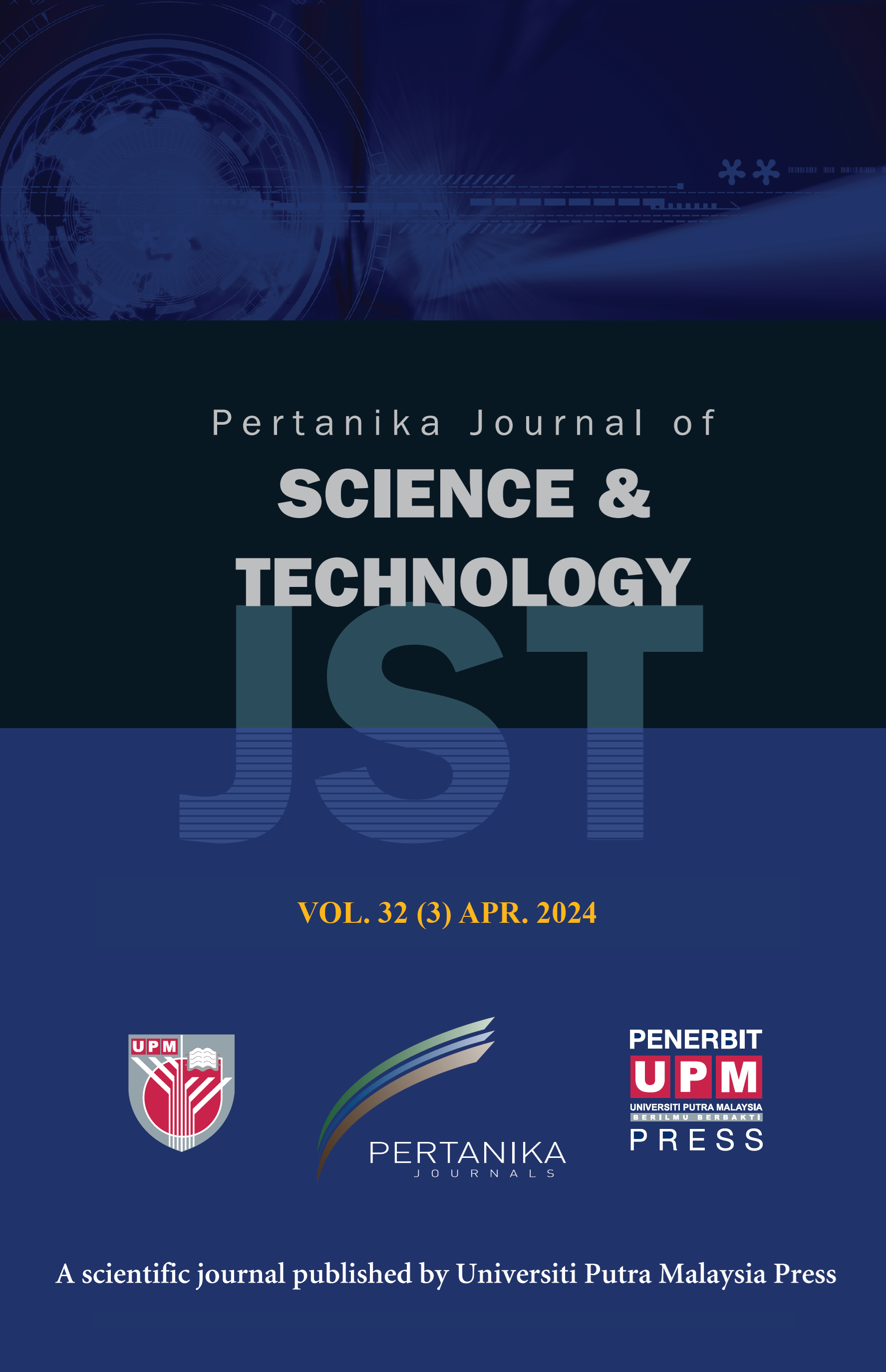PERTANIKA JOURNAL OF SCIENCE AND TECHNOLOGY
e-ISSN 2231-8526
ISSN 0128-7680
J
J
Pertanika Journal of Science & Technology, Volume J, Issue J, January J
Keywords: J
Published on: J
J
-
Ahmad, J. (2012). Intentional vs. incidental vocabulary learning. ELT Research Journal, 1(1), 71-79.
-
Asgari, A., & Mustapha, G. (2012). Vocabulary learning strategies of Malaysian ESL students. Pertanika Journal of Social Sciences & Humanities, 20(3), 751-764.
-
Coxhead, A. (2000). A new academic word list. TESOL Quarterly, 34(2), 213-238. https://doi.org/10.2307/3587951
-
Coxhead, A., & Byrd, P. (2007). Preparing writing teachers to teach the vocabulary and grammar of academic prose. Journal of Second Language Writing, 16, 129-147. https://doi.org/10.1016/j.jslw.2007.07.002
-
Danesh, T., & Farvardin, M. T. (2016). A comparative study of the effects of different glossing conditions on EFL learners’ vocabulary recall. SAGE Open, 6(3). https://doi.org/10.1177/2158244016669548
-
Duan, S. (2018). Effects of enhancement techniques on L2 incidental vocabulary learning. English Language Teaching, 11(3), 88-101. https://doi.org/10.5539/elt.v11n3p88
-
Hernández, T. A. (2018). Input flooding. The TESOL Encyclopedia of English Language Teaching, 1-7.
-
Huang, L. L., & Lin, C. C. (2014). Three approaches to glossing and their effects on vocabulary learning. System, 44, 127-136. https://doi.org/10.1016/j.system.2014.03.006
-
Huckin, T., & Coady, J. (1999). Incidental vocabulary acquisition in a second language: A review. Studies in Second Language Acquisition, 21, 181-193. https://doi.org/10.1017/s0272263199002028
-
Hulstijn, J. H. (1992). Retention of inferred and given word meanings: Experiments in incidental vocabulary learning. In Vocabulary and applied linguistics (pp. 113-125). Palgrave Macmillan. https://doi.org/10.1007/978-1-349-12396-4_11
-
Hulstijn, J. H. (2001). Intentional and incidental second language vocabulary learning: A Reappraisal of elaboration, rehearsal, and automaticity. In P. Robinson (Ed.), Cognition and second language instruction (pp. 258-286). Cambridge University Press. https://doi.org/10.1017/cbo9781139524780.011
-
Hulstijn, J. H., Hollander, M., & Greidanus. (1996). Incidental vocabulary learning by advanced foreign language students: The influence of marginal glosses, dictionary use, and reoccurrence of unknown words. The Modern Language Journal, 80, 327-339. https://doi.org/10.1111/j.1540-4781.1996.tb01614.x
-
Jung, J. (2016). Effects of glosses on learning of L2 grammar and vocabulary. Language Teaching Research, 20(1), 92-112. https://doi.org/10.1177/1362168815571151
-
Kalajahi, S. A. R., & Pourshahian, B. (2012). Vocabulary learning strategies and vocabulary size of ELT students at Emu in Northern Cyprus. English Language Teaching, 5(4), 141-149. https://doi.org/10.5539/elt.v5n4p138
-
Ko, M. H. (2012). Glossing and second language vocabulary learning. TESOL Quarterly, 46(1), 56-79. https://doi.org/10.1002/tesq.3
-
Krashen, S. D. (1985). The input hypothesis: Issues and implications. Longman.
-
Kweon, S. O., & Kim, H. R. (2008). Beyond raw frequency: Incidental vocabulary acquisition in extensive reading. Reading in a Foreign Language, 20(2), 191-215.
-
Nagy, W. E., Herman, P. A., & Anderson, R. C. (1985). Learning words from context. Reading Research Quarterly, 20(2), 233-253. https://doi.org/10.2307/747758
-
Namaziandost, E., Rezvani, E., & Polemikou, A. (2020). The impacts of visual input enhancement, semantic enhancement, and input flooding on L2 vocabulary among Iranian intermediate EFL learners. Cogent Education, 7(1), 1-14. https://doi.org/10.1080/2331186x.2020.1726606
-
Nation, I. S. P. (2001). How many high frequency words are there in English. Language, Learning and Literature: Studies presented to Hakan Ringbom, 4, 167-181.
-
Nation, I. S. P., & Waring, R. (2013). Extensive reading and graded readers. Compass Publishing.
-
Nation, I. S. P., & Webb, S. A. (2011). Researching and analyzing vocabulary. Heinle, Cengage Learning.
-
Ponniah, R. J. (2011). Incidental acquisition of vocabulary by reading. The Reading Matrix, 11(2), 135-139.
-
Pulido, D. (2007). The relationship between text comprehension and second language incidental vocabulary acquisition: A matter of topic familiarity? Language Learning, 57, 155-199. https://doi.org/10.1111/j.1467-9922.2007.00415.x
-
Richards, J. C., & Schmidt, R. (2002). Longman dictionary of applied linguistics and language teaching. Longman. https://doi.org/10.4324/9781315833835
-
Schmidt, R. W. (1990). The role of consciousness in second language learning. Applied Linguistics, 11(2), 129-158.
-
Schmitt, N. (2000). Vocabulary in language teaching. Cambridge University Press.
-
Schmitt, N. (2010). Researching vocabulary: A vocabulary research manual. Palgrave Macmillan. https://doi.org/10.1057/9780230293977
-
Smith, M. S. (1993). Input enhancement in instructed SLA. Studies in Second Language Acquisition, 15(2), 165-179. https://doi.org/10.1017/s0272263100011943
-
Sulaiman, N. A., Salehuddin, K., & Khairuddin, R. (2018). Academic word list knowledge of Malaysian ESL undergraduates. GEMA Online® Journal of Language Studies, 18(4),1-14. https://doi.org/10.17576/gema-2018-1804-01
-
Warren, P, Boers, F., Grimshaw, G., & Siyanova-Chanturia, A. (2018). The effect of gloss type on learners’ intake of new words during reading. Evidence from eye tracking. Studies in Second Language Acquisition, 40(4), 883-906. https://doi.org/10.1017/s0272263118000177
-
Watanabe, Y. (1997). Input, intake, and retention: Effects of increased processing on incidental learning of foreign language vocabulary. Studies in Second Language Acquisition, 19, 287-307. https://doi.org/10.1017/s027226319700301x
-
Webb, S. (2008). The effects of context on incidental vocabulary learning. Reading in a Foreign Language, 20(2), 232.
-
Webb, S., & Nation, P. (2017). How vocabulary is learned. Oxford University Press.
-
Yunus, K., Mohamad, M., & Waelateh, B. (2016). The breadth of receptive vocabulary knowledge among English major university students. Journal of Nusantara Studies, 1(1), 7-17.https://doi.org/10.24200/jonus.vol1iss1pp7-17
-
Zahar, R., Cobb, T., & Spada, N. (2001). Acquiring vocabulary through reading: Effects of frequency and contextual richness. Canadian Modern Language Review, 57(4), 541-572. https://doi.org/10.3138/cmlr.57.4.541
-
Zarei, A. A., Esfandiari, R., & Ne’man, K. (2016). The effects of input enhancement techniques on the comprehension and production of English lexical collocations. Iranian Journal of Language Issues, 2(1), 1-21.
-
Zulu, C. (2005). Academic Reading ability of first-year students: What’s high school performance or prior exposure to academic reading got to do with it? Southern African linguistics and Applied Language Studies, 23(1), 111-123. https://doi.org/10.2989/16073610509486377
ISSN 0128-7680
e-ISSN 2231-8526




